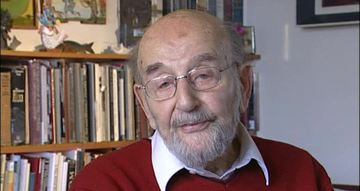I worked with Harry Watt on short films in Scandinavia mainly, and the most famous film now in... in my career was Get Carter with Mike Hodges, who is a very underrated director. We shot the film in Newcastle. It was transposed, the original book was set in Scotland, I believe, and it was very pleasant work to do. Again, all location, no studio. The... Michael Caine was in the lead. He was very professional indeed. He was always there when he was wanted, and he always knew his lines, and he is a very good actor, which comes through in the stoical way he treated the part. And it has become — everybody has seen it — a real favourite film with many people.
What kind of look did you try and give the film?
The camera work on it... it was very influenced by Mike Hodges who has a very good eye for setups and he of course conferred with his operator and myself, but he influenced all of us, and much of the good look is due to him, I confess. My main task was lighting on location, very moderately, and waiting for the right daylight and setting the exposure on the lens. It was a very pleasant film to shoot because we all got on very well, and the Newcastle people were very cooperative. Anything we needed, any official permit to film in the streets for instance, also the... we always had a lot of children around watching us, and on one occasion I saw a little girl smoking and I said, ’Aren’t you a little young to smoke?’ And she said, ‘Oh no, I'm on the dole’. That was a terrible time in Newcastle, the unemployment was very, very big, but it has changed, I understand. I haven’t been since. But the filming is still remembered. They wanted to tear down a car park we had used because it never parked any cars. I don’t know what was wrong with it, but it was an enormous car park, and the council of Gateshead — where it was — wanted to pull it down, but there was a Get Carter Society in Newcastle and they protested, and I believe it’s still standing.
How did you light the interiors?
The... the interiors where we worked were very carefully chosen. They were ordinary houses. The first really very difficult part for me was a very long bar. He... when he arrives in Newcastle, he goes to that bar, and there was nowhere to hide lamps. It was so difficult, but somehow we managed with very small lamps, to hide them behind bottles, or behind other things — boxes — that was a very difficult interior, but other pubs were more easy to do. There’s one or two others feature in the film, because one of the characters works in the pu... in the pub, and Michael goes to see him. And the rest was ordinary houses.






